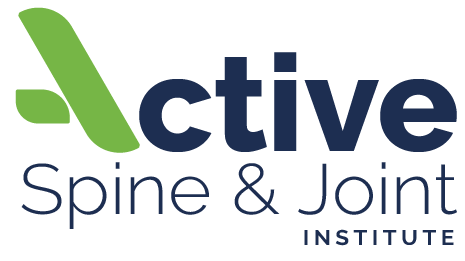Can Arthritis Be Reversed? What the Science Says
The Big Question Everyone’s Asking
If you're struggling with joint pain—whether it's in your knees, hips, back, or shoulders—you’ve probably wondered:
“Is surgery my only option?”
Or maybe even:
“Is there a way to actually heal the damage arthritis has caused?”
Good news: We're entering an era where reversing joint damage and regenerating tissue is not science fiction—it's science fact. At Active Spine and Joint Institute, we specialize in regenerative medicine treatments like A2M and Wharton’s Jelly that help our patients avoid surgery and get back to living pain-free.
Let’s break down what arthritis is, what traditional medicine misses, and how regenerative therapies are helping real patients heal.
What is Arthritis, Really?
Arthritis isn’t a single disease—it's a general term covering over 100 conditions. The most common form is osteoarthritis, where cartilage (your joint's natural cushion) wears down, leading to pain, stiffness, and inflammation.
Over time, this wear-and-tear can make daily activities—walking, standing, even sleeping—painful. And for years, the go-to solutions were:
Over-the-counter or prescription pain meds
Steroid injections
Physical therapy
And eventually… joint replacement surgery
But none of these options fix the underlying problem.
They’re like slapping a band-aid on a broken bone.
That’s where regenerative medicine comes in.
Regenerative Medicine: Not Just a Buzzword
Regenerative medicine is designed to do what your body wants to do naturally: repair and rebuild.
At Active Spine and Joint Institute, two of our most powerful regenerative options are:
A2M (Alpha-2-Macroglobulin)
A2M is a naturally occurring protein in your blood that blocks the destructive enzymes responsible for cartilage breakdown. These enzymes eat away at your joints over time—A2M stops them in their tracks.
When concentrated and injected directly into the affected area, A2M acts like a molecular trap, neutralizing these enzymes and helping prevent further joint degeneration.
Great for:
Knee pain
Early to moderate osteoarthritis
Athletes or active adults with joint wear and tear
Wharton’s Jelly (From Umbilical Cord Tissue)
Wharton’s Jelly contains a rich mix of growth factors, cytokines, and stem cells that help regenerate cartilage, reduce inflammation, and promote healing.
It’s ethically sourced, highly potent, and injected directly into damaged joints. Patients often experience improved mobility, reduced pain, and tissue regeneration over time.
Great for:
Advanced arthritis
Patients who have tried everything else
Anyone trying to avoid knee or hip replacement surgery
But Can You Really Reverse Arthritis Damage?
Short answer?
Yes — but it depends.
If the damage is too far gone (like complete joint destruction), surgery may be necessary. But many patients catch it early or mid-stage, making regenerative therapy a powerful alternative to invasive surgery.
What we’ve seen in our clinic:
Patients are delaying or avoiding joint replacement surgery altogether
Reduction in pain levels after 4–6 weeks
Improved joint mobility and flexibility
Better quality of life—without the risks of general anesthesia or long recovery times
Why More Patients Are Choosing Regenerative Options
No Scalpel, No Stitches, No Downtime
You walk in and walk out—no hospital stay, no post-op drama.Treat the Root Cause
Unlike cortisone shots or painkillers, regenerative therapy targets the damage, not just the symptoms.Cost-Effective Compared to Surgery
With insurance deductibles climbing and surgeries hitting five figures, many patients find regenerative options to be more affordable long-term.Personalized Treatment Plans
Everybody is different—so we tailor every plan to your specific joint issue, health history, and goals.
What Conditions Can A2M and Wharton’s Jelly Help With?
✅ Chronic knee pain
✅ Pain from shoulder injuries or rotator cuff issues
✅ Early signs of hip degeneration
✅ Nonsurgical options for back pain and arthritis
✅ People trying to avoid hip or knee replacement
Is It Safe?
Both A2M and Wharton’s Jelly are FDA-regulated, safe, and effective. And unlike older stem cell options that required bone marrow extraction, these modern therapies are non-invasive and low-risk.
We’ve seen hundreds of patients turn their pain around—without the need for prescriptions, crutches, or surgery.
What’s the Process Like?
Consultation & Joint Evaluation
We’ll review your medical history, imaging (if available), and do a physical assessment.Customized Plan
If you're a good candidate, we’ll map out your treatment plan—including A2M, Wharton’s Jelly, or other therapies we offer.In-Office Procedure
The injection takes under 30 minutes. Most patients return to normal activity the same day.Follow-Up & Progress Check-Ins
We stay in touch as your joint begins to heal—helping guide your recovery.
Is This For You?
If you're:
Tired of living with joint pain
Looking for an alternative to knee or hip surgery
Active and want to stay that way
Or just want to know your options before making a major decision
Then it's time to talk to our team. You have nothing to lose—except the pain.
Hope is Not Lost
We believe your body has the power to heal—and with A2M and Wharton’s Jelly, we’re seeing that happen every day.
Don’t let another year go by stuck in pain or waiting for surgery. Let’s explore what’s possible.
Interested in finding out if you’re a candidate for joint regeneration?
📞 Call us at (609) 886-8585or visit click here to schedule a consultation.

